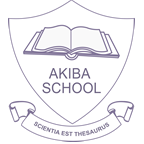
The CBC Education System
The Competency-Based Curriculum (CBC) in Kenya follows a 2-6-3-3-3 education cycle, which means learners transition through a total of 17 levels, with each level lasting for one year. The curriculum is divided into four main categories:
a. Early Year Education (EYE): This category focuses on mastering basic skills and consists of two sub-categories:
i. Pre-Primary: Comprising of Pre-Primary 1 (PP1) and Pre-Primary 2 (PP2), which were formerly referred to as Nursery. Children enter this level at a minimum age of 4 years old. Before Pre-Primary, there is also the option of Day-Care, which takes one year but is not mandatory.
ii. Lower Primary: After Pre-Primary, learners move on to Grade 1, Grade 2, and Grade 3. At the end of Grade 3, the Kenya National Examination Council (KNEC) assesses students to determine if they are ready to progress to the Middle School level.
b. Middle School: This category includes Upper Primary and Lower Secondary levels.
i. Upper Primary: Consisting of Grade 4, Grade 5, and Grade 6, learners are assessed by KNEC at the end of Grade 6 to determine their readiness for Lower Secondary.
ii. Junior Secondary: Comprising of Grade 7, Grade 8, and Grade 9, learners undergo another KNEC assessment at the end of Grade 9 to determine their readiness for Senior School.
The Competency-Based Curriculum (CBC) in Kenya was introduced to replace the 8-4-4 system, aiming to provide a more holistic and skills-oriented education. Here are some key aspects of the CBC:
- Focus on Competencies: The CBC emphasizes the development of competencies rather than just academic knowledge. This includes critical thinking, creativity, communication, and collaboration skills.
- Learner-Centered Approach: The curriculum is designed to be learner-centered, encouraging active participation from students in their learning processes.
- Integration of Subjects: Subjects are integrated to allow for interdisciplinary learning, making it easier for students to connect concepts from different areas.
- Practical Learning: There is a significant emphasis on practical skills and experiential learning, with activities designed to apply knowledge in real-world contexts.
- Assessment: Assessment methods under the CBC are diverse, including formative assessments, which focus on the ongoing learning process, rather than solely relying on summative assessments like exams.
- Age-Appropriate Learning: The CBC is structured to cater to different age groups, with content that is suitable and relevant to each level of development.
- Parental Involvement: The curriculum encourages parental involvement and community engagement in the education process.
- Implementation Challenges: The rollout of the CBC has faced challenges, including resource allocation, teacher training, and infrastructural needs.
- Levels of Education: The CBC is implemented across different levels, including early childhood education, primary, and secondary education, with a progressive approach to skills and knowledge acquisition.
- Continuous Review: The curriculum is subject to periodic reviews to ensure it remains relevant and effective in meeting the needs of learners and the job market.
The CBC aims to prepare students not just for exams but for life and work, aligning education more closely with the demands of the 21st century.
